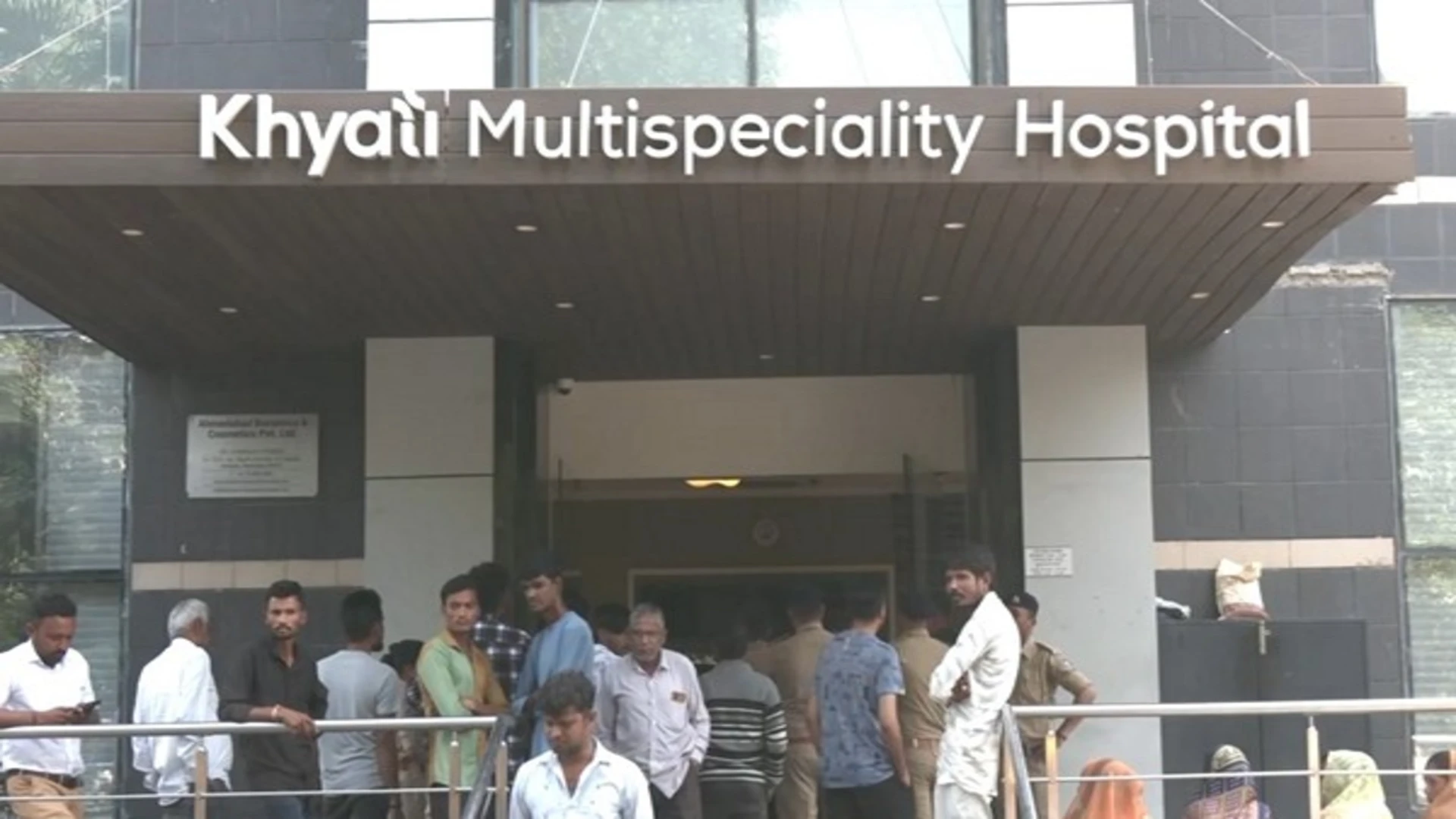
The foundation of modern Indian higher education was laid in 1781 when people of creditable reputation from the city of Calcutta approached the then Governor General, Warren Hastings, and implored him to establish institutions of higher learning. After a long wait of 36 years ultimately they themselves became the crusaders. They set up Hindu College in 1817 which subsequently ignited aspirations in the heart of other leaders who set up a number of other colleges in the next 40 years in places like Poona, Bombay, Agra, Patna, Madras, etc. It was only in 1857 that the government decided to set up three universities in the port cities of Calcutta, Bombay and Madras. Unlike the present day, these universities were the places of testing the value of knowledge imparted through different colleges. It was only in 1914 when for the first time Calcutta University, under the visionary leadership of Sir Asutosh Mookherjee, set up the university departments for teaching and research. Though he had to face a tough time implementing this independent decision of his, he could successfully do it because of the support from his fellow colleagues who agreed to teach at lower wages. It was his courage and vision that marked the beginning of the era of research in the university system.
It was the sheer hard work and passion of the teachers which produced noteworthy research work during the period of 1920-45. But shortly thereafter a downward trend became apparent due to a number of factors. Prominent amongst them, which outshined the progression of higher standards of research, were persistent expansion of higher education, scarcity of resources, opening of other opportunities and switching of talented workforce to other lucrative professions. Efforts were made to some extent to remedy these constraints by giving preferential treatment to national laboratories and research institutes compared to that of the universities, but with little success. The importance of the university system was very well expressed by Dr Shanti Swarup Bhatnagar, who while presiding over the Annual meeting of the National Institute of Sciences at Allahabad on 4th January, 1949 said that, “Ultimately we have to depend on the universities for an even and constant flow of scientific workers and leaders imbued with zeal and zest for research.”
The Education Commission (1964-66) while taking note of the precarious condition of research underscored the significance of investment in the development of research by considering it a fundamental national goal since it considered research as an essential element for the sustenance of high quality teaching and learning. The commission noted that the expenditure on research in the university system was abysmally low (0.3% of the GNP) and that the per capita expenditure in education and research was one-thirtieth of England’s. The Commission expressed its concern on the indifferent attitude of the dispensation which took little interest and provided hardly any encouragement even to the most outstanding scientists. The Commission remained unequivocal in its support for research since it believed that teaching and learning could not be improved in the absence of research.
The government took note of declining trends both in enrolment in basic sciences and scientific research during the period 2000-04. This was the time when the overall pace of scientific development was being fast-tracked in the outside world and the developed economies continued to attract brilliant students in their programs. It became a subject of such great concern that the Government of India took two major initiatives in 2005 to promote science education and research. First, it set up a task force for the promotion of Basic Scientific Research in universities (BSR) which recommended a committed additional grant of Rs. 600 crore per annum to the university system. Second, on the recommendation of the Scientific Advisory Council to the Prime Minister, the government decided to establish as many as seven Indian Institutes of Science Education & Research (IISERs) during the period of 2006-16 to promote education in basic sciences and research. Most of these institutions which are directly supported by the ministry seem to be doing fairly well.
The University Grants Commission (UGC) has been the major source of nurturing research insofar as the university system is concerned. The most notable contribution of the UGC has been in terms of providing common research facilities and services for the universities by establishing and maintaining as many as seven such institutions. Three of them are singularly devoted to promoting research in frontier domains of knowledge. They are Inter-University Centre for Astronomy and Astrophysics (IUCAA), Pune, Inter-University Accelerator Centre (IUAC), New Delhi and UGC-DAE Consortium of Scientific Research, Indore with its branch centers at Mumbai and Kolkata. These Centres have created world-class facilities for carrying out research in areas such as astronomy, astrophysics, science and computing in Laser Interferometric Gravitational-Wave Observatory (LIGO), Ion Accelerator, Material Sciences, etc. They have been truly playing a catalytic role in raising the standards of university research as these facilities are heavily used by both the faculty and the Doctoral and Postdoctoral scholars. But somehow these Centres are now gradually experiencing the crunch of resources resulting in a noticeable slowdown.
The UGC has also promoted international research collaboration with a number of leading countries like America, England, Israel, Germany, Norway, Australia, and New Zealand, to name a few. The UGC was the nodal agency in the implementation of these projects wherein it had committed a matching grant of 5 million USD with America for five years, 5.5 million pounds with England in two phases under UKIERI, and 2.5 million USD with Israel. This was a breathtaking initiative wherein the joint research projects were developed by the partnering institutions from both the sides in areas of mutual concerns like renewable energy, sustainable development, climate change, community health, environment, cyber security, etc. The UGC had provided wonderful opportunities to Indian researchers to carry out joint research with their counterparts from abroad. Most of these initiatives now seem to have been phased out.
With its limited resources, the UGC has done a commendable job by introducing a number of other schemes from early times at the levels of both institution and individual faculty. Of them, the prominent ones have been the Special Assistance Program (SAP), Centre of Excellence in a Particular Area of Study (CEPA), major and minor research projects, Universities with Potential for Excellence (UPE), Colleges with Potential for Excellence (CPE), Basic Scientific Research (BSR), Establishment of Chairs, etc. In addition, UGC has been financing a number of fellowships at different levels including the ones for women and different social groups. There were over two dozen such schemes, out of a total of about twelve dozen, which were contributing as great enablers for research. But some of these important initiatives with an impetus on research either have been phased out or put on hold facing a resource crunch.
It is apparent that the university system is passing through a difficult phase. Unlike western universities, Indian universities are not accustomed to mobilizing resources from other sources for a variety of reasons, some beyond their power. There are a few exceptions wherein some faculty members are able to mobilize grants from other funding organizations but that is only like a drop in the ocean. The culture of philanthropic initiatives that used to substantiate the fiscal position appears to have completely dried up. There are of course instances of corporate houses giving donations to foreign institutions, with the hope of getting good value for their money, but rarely to an Indian one. The fact remains that Indian universities are solely dependent upon meagre internal recoveries and maintenance grants from the central and provincial governments. The amount of development and research grants that they receive from the central government is incredibly insufficient.
Though universities have been recognised as the fountainheads for societal development, somehow Indian universities have been sidestepped in preference to standalone research establishments and premier institutions. This has been, among others, the foremost reason for their underperformance in research. The university system has been passing through a difficult phase because of the paucity of resources and incessant pressure to perform both nationally and globally. A large number of schemes that were introduced to invigorate the system either have been shut down or their funding is on a gradual decline.
The scheme of BSR is such a case in point. There was a strong sense of realisation in 2005 that there had been a steady decline in the quantity and quality of scientific research in the country due to inadequate infrastructural facilities, insufficient funding and lack of sufficient number of committed scientific workforce. The MHRD took note of the situation and set up a task force in May 2005, comprising renowned scientists like Prof. M.M. Sharma and Prof. Goverdhan Mehta, to strengthen the basic scientific research in universities. The task force had several rounds of discussion with eminent scientists like Prof. C.N.R. Rao. After making a proper assessment of the current status of scientific research and determining the areas of concern, the task force made as many as nine recommendations including earmarked funding of Rs. 600 crore per annum for the improvement of scientific research in universities.
The BSR was a very laudable initiative for the promotion of basic scientific research in universities. The then Additional Secretary of the MHRD, Sudeep Banerjee, took a personal interest and did a commendable job in the overall operationalisation of the scheme. He not only ensured an additional allocation of Rs. 600 crore but also persuaded the members of the same task force to act as an Empowered Committee for the implementation of its recommendations. The commitment of the members of the Empowered Committee and unstinting support of the MHRD made a very substantial difference to the results. It was a very unique way of moving forward by ensuring that teaching and research go hand-in-hand, the one reinforcing the other. The entire initiative was based on the premise that no teacher can be efficient unless he or she is meaningfully engaged in research. But when a scheme like this is abandoned midway for the want of resources then the great gains of such a reform and all efforts put in by eminent experts come to naught.
It will be highly regressive if Indian universities are allowed to slip at a time when basic scientific research is incredibly important to seek answers to fundamental questions now confronting humanity, and more so when the new policy has envisaged the development of research-intensive universities as one of the three categories of institutions of higher learning. The bottom line is that in times such as these the university system requires a special package to rejuvenate basic scientific research besides ensuring the continuity of consequential schemes before it gets pushed to the limit.
The author is former Chairman, UGC. The views expressed are personal.















